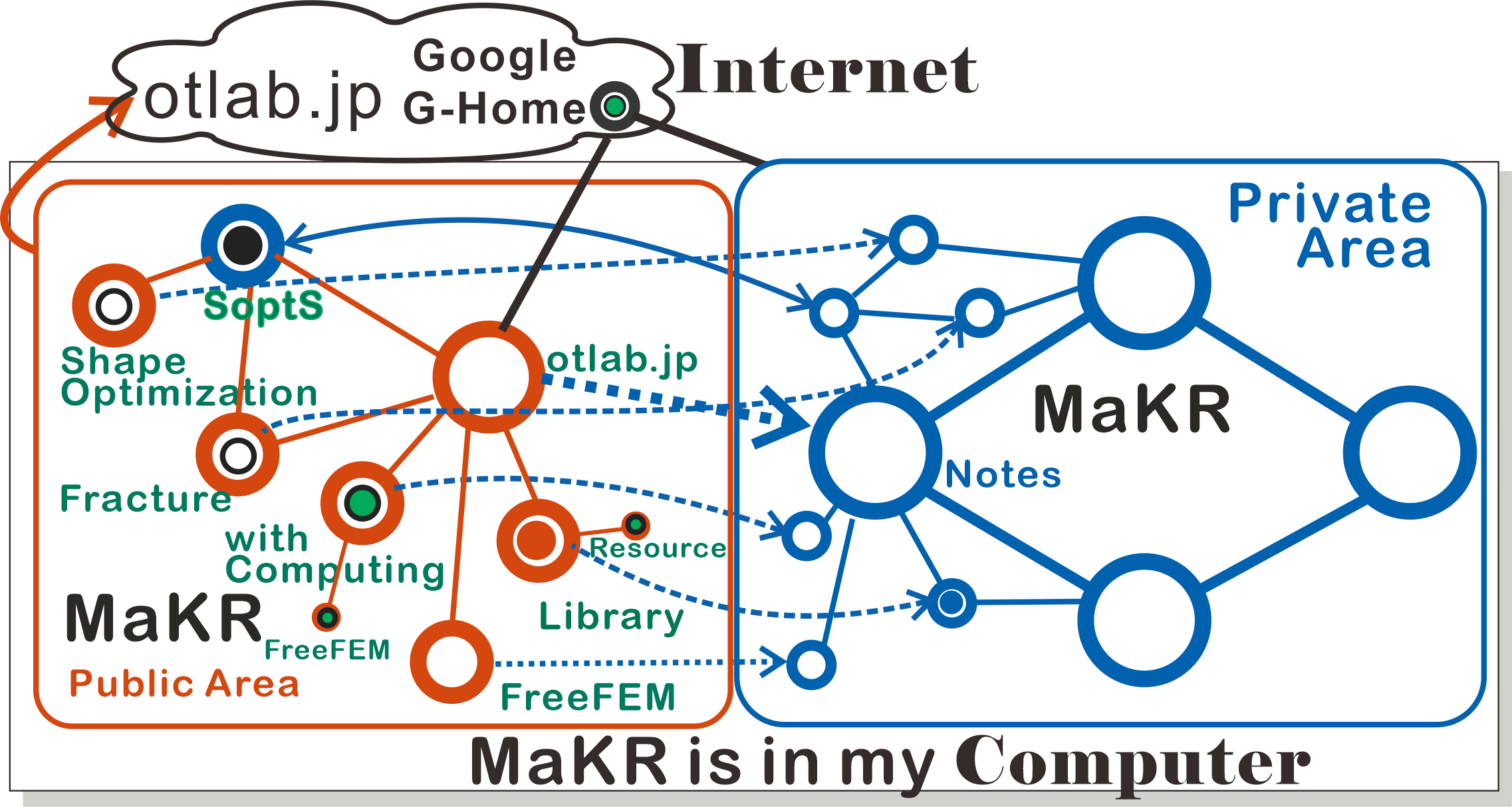The page is the Interface to the Calculus,Analysis in private
Calculus and Analysis
Calculus
[Chapter VIII, Calculus, C-R41] begins with the following sentence.
With an absurd oversimplification, the “invention” of the calculus is sometimes ascribed to two men, Newton and Leibniz. In reality, the calculus is the product of a long evolution that was neither initiated nor terminated by Newton and Leibniz, but in which both played a decisive part.
Historically, the integral is considered to be the exhaustive method of Archimedes in the 3rd century BC [Chapter VIII,1.1, C-R41] The area of a circular disk or of a segment of a parabola? This crucial question, which is at the base of the integral calculus, was treated as early as the third century B.C. by Archmedes, who calculated such areas by a process of "exhaustion
.”
and the derivative is Fermat's work on the derivative as a slope in the 17th century [Chapter VIII,2.1, C-R41] While the concept of integral has its roots in antiquity, the other basic concept of the calculus, the derivative, was formulated only in the seventeenth century by Fermat and others. It was the discovery by Newton and Leibniz of the organic interrelation between these two seemingly quite diverse concepts that inaugurated an unparalleled development of mathematical science.
Isaac Newton showed that the relationship between the motion of an object and the forces acting on it can be described by differential equations with three fundamental laws. When he found the fundamental theorem of calculus[Chapter VIII,5, C-R41], that is the inverse of the derivative is the integral, Newton may had thought that all motion could be resolved, because, by calculating the area, the differential equation can be solved. Unfortunately, it was found that many indefinite integrals could not be expressed in terms of known functions (elementary functions), and new functions (special functions) were created and then studied. Gottfried Leibniz introduced the concept the infinitesimal and define the derivative as the ratio of the infinitesimal $dx,dy$ when the motion is expressed as the function $y=f(x)$. Maybe Leibniz thought of the fundamental theorem to solve $dy=f'(x)dx$ ? However, a new question could arise: what is an infinitesimal?
Analysis
Real number, $\epsilon -\delta $ (ε, δ)-definition of limit is a wider term that includes concepts and proofs related to calculus (continuity, differentiation, integration), but many others, including for example Measure } Theory and Functional Analysis. However, it is usually impossible to write down explicit formulas for solutions of differential equations. Note that Functional Analysis is classified as PDE. }Computer-Supported Calculus
Even if you forget the formulas for calculus, Formula Manipulation System (FMS) will calculate for you. However, it cannot tell you what to calculate or what the result means and is powerless in analysis.
- Mathematica
- solves many differential equations as well as differential and integral formulas. However, Mathematica has currently its limitations in PDE , because explicit writing down of solutions of PDE (partial differential equations) is usually impossible. Finite element calculations are insufficient for specialist requirements. Mathematica recently has focused on data processing and machine learning? Wolfram .
- Maple
- is the built-in formula processor in TeX's WYSIWYG editor Scientific WorkPlace (closed on 30 June 2021), Maple may be a good partner for TeX. Its symbolic computing power is comparable to Mathematica. Maplesoft .
- Maxima
- is free and is a system for the manipulation of symbolic and numerical expressions, including differentiation, integration, Taylor series, Laplace transforms, ordinary differential equations, systems of linear equations, polynomials, sets, lists, vectors, matrices and tensors. Maxima .
Information about the page: The current position is non-black filled circle circle in the diagram below. Blue is the Calculus,Analysis in private and orange is a duplicate for public use, where dashed line means the intrface to the Calculus,Analysis in private.
